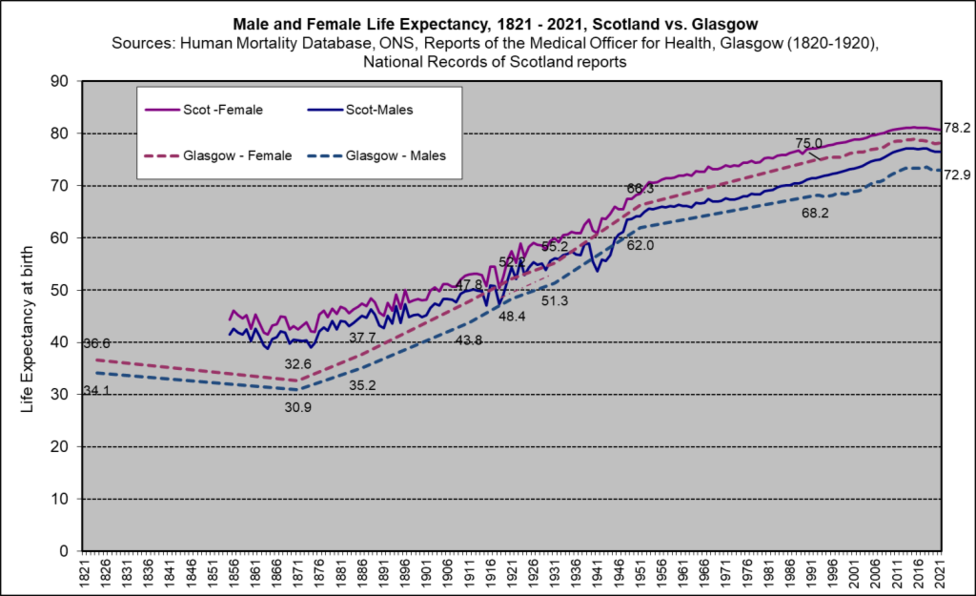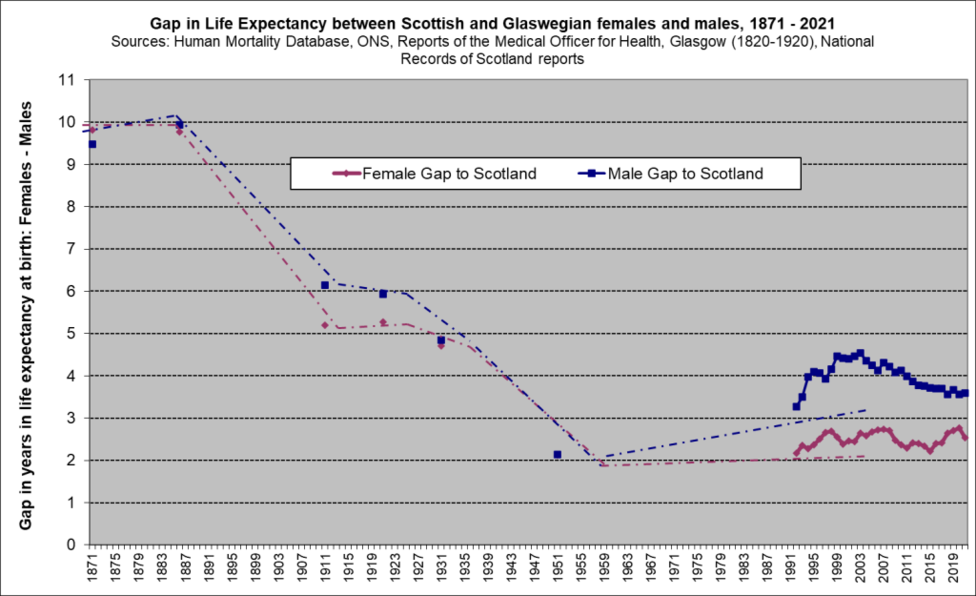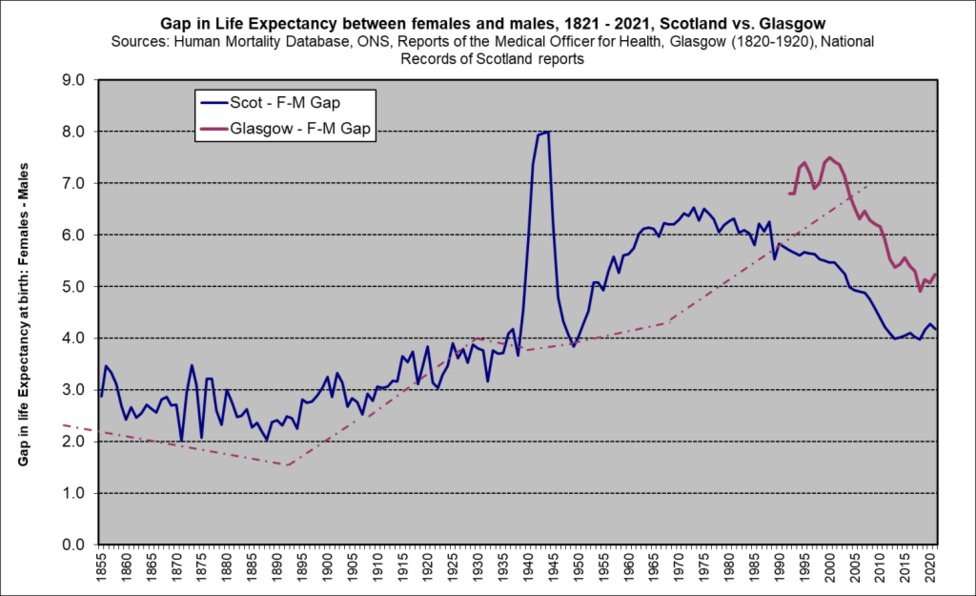Historic trends
Trends in life expectancy in Glasgow and Scotland over 200 years
The graph below compares trends in male and female life expectancy at birth in Glasgow and Scotland over the last 200 years.
- Life expectancy for Glaswegian (and Scottish) men and women started to improve from the mid 1870s onwards and followed a consistent upward trajectory – excluding certain periods, such as the war years – until 2012.
- However, from 2012 life expectancy increases stalled and then started to reduce. Evidence suggests this change is linked to UK austerity policies. In the most recent years shown (from 2020) the impact of increased mortality due to the COVID-19 pandemic has led to a further reduction in life expectancy.
- Life expectancy in Glasgow has been consistently lower than in Scotland.
- There is a gender gap in life expectancy. In Glasgow in the late 1800s female life expectancy was only a couple of years longer than male life expectancy, but then this gap widened considerably. More recently the gap started to narrow again. Currently, average female life expectancy in Glasgow is 5.2 years longer than for men.
The following trend graphs focus more specifically on the gap in life expectancy between Glasgow and Scotland and between men and women.
Gap in life expectancy between males and females in Glasgow and Scotland over 150 years
The gap in life expectancy between Glaswegian and Scottish males was nearly ten years in the 1880s but had narrowed to 3.6 years by 2021; the equivalent gap for women had also been nearly ten years in the 1880s but by 2021 had narrrowed to 2.5 years.
Gender gap in life expectancy compared between Glasgow and Scotland over 200 years
On average women live longer then men. At a Scottish level, this gender-related gap in life expectancy increased during the 20th century, spiking during the second world war and peaking in the mid 1970s. Since then, the deficit in male life expectancy compared to female life expectancy has reduced from 6.5 years to 4.2 years by 2021.
The gap in life expectancy between men and women in Glasgow followed a similar trajectory but peaked later, in 2001, when a girl's life expectancy at birth was 7.4 years longer than a boy's life expectancy at birth. Since this peak, the gap has narrowed to 5.2 years over the last decade.
Notes
The estimates used in these graphs come from a variety of sources, and life expectancy figures for Glasgow are only available for a limited number of years, leading to the need to construct a notional trend line between years. These caveats should be noted and limit the accuracy of interpretation.
For simplicity of presentation, the data on the graphs are presented for individual years, but in fact are based on three year averages, e.g. life expectancy labelled as 2019 is actually an estimate for the period 2018-2020. This period includes the impact of the COVID-19 pandemic which reached Scotland early in 2020.
Further reading
Research on the impact of austerity on mortality and life expectancy can be accessed on the GCPH website. The most recent paper on the likely impact of UK austerity policies was published in October 2022: ‘Bearing the burden of austerity: how do changing mortality rates in the UK compare between men and women?
This page was last updated in October 2023.
